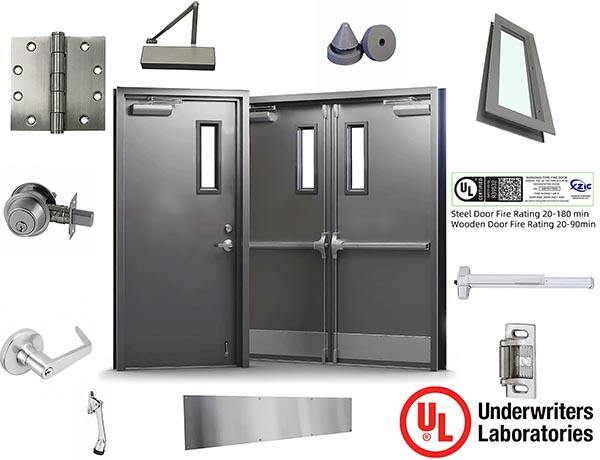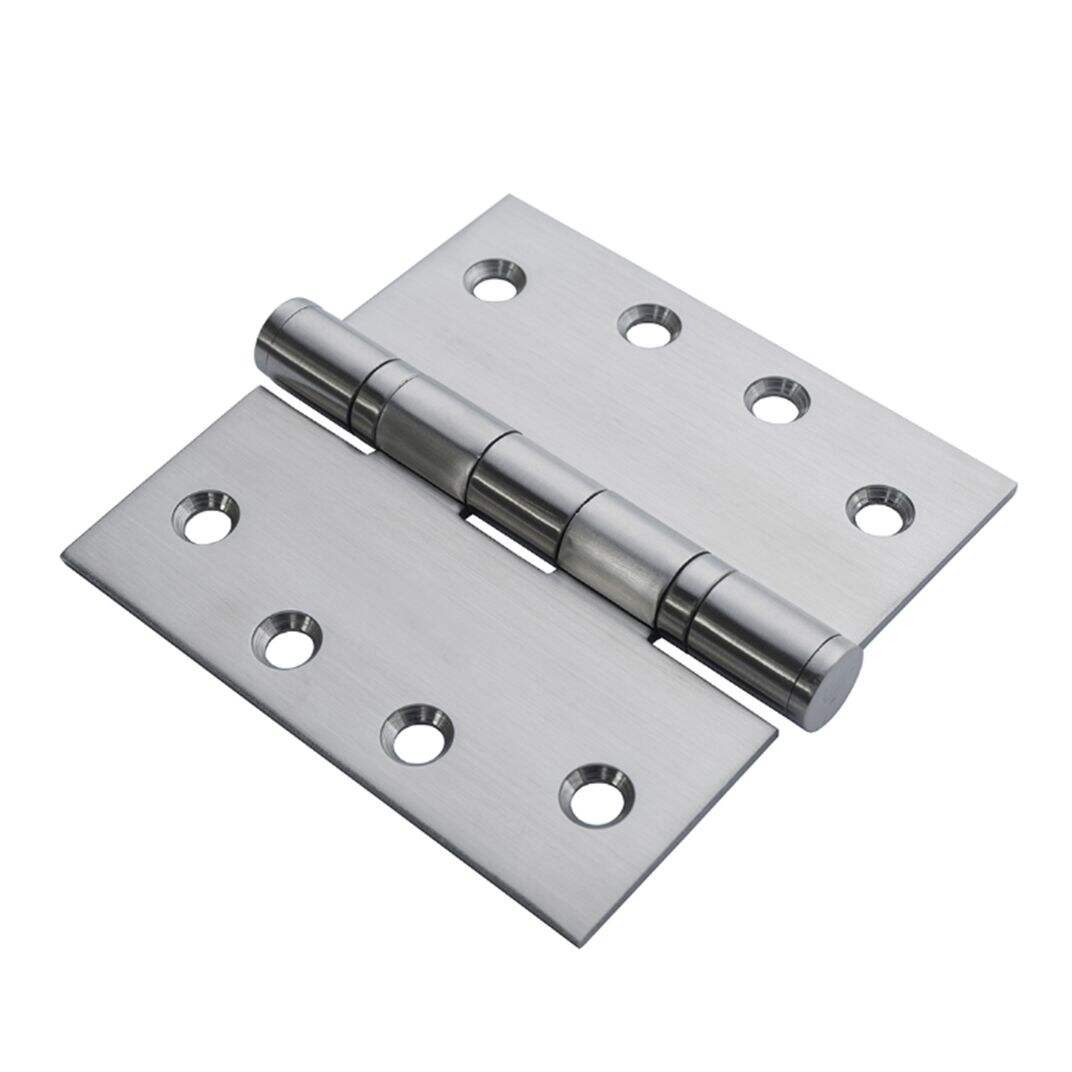Materials Used in the Production of UL Fire Doors
UL fire doors, designed to meet stringent safety standards set by Underwriters Laboratories(UL), are critical for fire containment and occupant safety in buildings. These doors are typically constructed from either wood or steel, build the whole door achieve fire resistance, structural integrity, and compliance with UL standards. It is worth noting that UL does not directly specify what materials need to be used to make door products. ANSI/UL 10B, ANSI/UL 10C Standards & EN 1634-1 main focus is on the overall performance of the fire door rather than the specific type of material. Fire doors must pass rigorous fire tests, durability tests and smoke control tests.
Below is an overview of the primary materials used in the production of wooden and steel UL fire doors.
Wooden Fire doors
Wooden fire doors combine aesthetics with fire-resistant properties, often used in settings where appearance is a priority. Like hotel guest room door, university room door. The materials used include:
Veneers: Thin layers of hardwood or engineered wood veneers, such as oak, maple, or birch, are applied to the door’s surface for aesthetic appeal. These veneers are treated to maintain fire resistance while providing a polished finish.
laminated veneer lumber(LVL): The solid wood part of a fire door. Its exterior and interior are wrapped and filled with fire-resistant materials. Responsible for providing structural strength to the wood door as a whole.
Mineral Core: For higher fire ratings, a mineral core composed of materials like calcium silicate or magnesium oxide provides enhanced heat resistance and dimensional stability.
Adhesives: Fire-resistant adhesives, typically phenolic or urea formaldehyde resins, are used to bond layers of the door. These adhesives maintain integrity under high temperatures, ensuring the door remains intact during a fire.
Edge Banding: Hardwood or fire retardant composite materials are used for edge banding to protect the door’s perimeter and enhance durability.
Fire Board: Fireproof board are also made from mineral materials. It is used as a sandwich between the door core and the individual solid wood parts. It is also used as the main material for the fire resistance of the door frame.
Steel Fire Doors
Steel fire doors are favored for their durability and superior fire resistance, commonly used in industrial and commercial settings. The materials include:
Galvanized Steel: The primary material for steel fire doors is galvanized steel, typically ranging from 16 to 20 gauge. The zinc coating prevents corrosion, ensuring long-term durability, while the steel provides structural strength and fire resistance for ratings up to 3 hours.
Insulating Core Materials: Steel doors often feature a core of mineral wool, fiberglass, or honeycomb kraft paper. Mineral wool, made from molten rock or slag, offers excellent thermal insulation. Fiberglass provides lightweight insulation, while honeycomb kraft paper enhances rigidity without adding significant weight.
Intumescent Seals: Similar to wooden doors, steel fire, steel fire doors use intumescent seals made from graphite or sodium silicate-based materials to seal gaps during a fire, ensuring smoke and flame containment.
Reinforcing Hardware Materials: Steel reinforcements, such as steel stiffeners or channels, are used within the door to prevent warping. These are typically made from the same galvanized steel as the door skin.
We are XZIC(Shanghai Xunzhong Industry Co., Ltd.) We are professional on fire rated door product. Our company produces 50000 sets of steel fire doors and 20000 sets of wooden fire doors every year. We have the most complete UL certification in China. Our high-quality fire-rated doors, which are specifically designed to meet US and Canadian standards. Steel fire door up to 3 hours fire rated, wooden fire door up to 90 mins. Also we do other kind of doors for residential use. All the doors can be customized.
More information see our website: www.ulfiredoormfg.com
Get in touch with our sales Contact by mail: [email protected]

Recommended Products
Hot News
-
UL fire door Regulatory and Certification Requirements
2025-08-08
-
What are the types for fire Doors?
2025-07-12
-
Why Hollow Metal Doors Are a Cost-Effective Long-Term Solution for Businesses
2025-07-23
-
What’s the price difference for UL LISTED FIRE DOOR of mahogany/oak/ beech/walnut veneer finish compared with Formica /TAK/ Wilsonart Laminated finish ?
2025-07-31
-
What is MDF (medium-density fiberboard) Door?
2025-06-15
-
Essential Aspects of UL Metal Fire Door Inspection
2024-01-02
-
XZIC Delivers Superior Quality UL Fire Doors to Our Valued Client in Qatar
2024-01-02
-
Can hollow metal doors be insulated?
2024-01-02
 EN
EN
 AR
AR
 BG
BG
 NL
NL
 FR
FR
 DE
DE
 EL
EL
 IT
IT
 KO
KO
 PL
PL
 PT
PT
 RO
RO
 RU
RU
 ES
ES
 TL
TL
 IW
IW
 ID
ID
 UK
UK
 VI
VI
 TH
TH
 FA
FA
 AF
AF
 MS
MS
 SW
SW
 BE
BE
 UR
UR
 BN
BN
 KM
KM
 LO
LO
 LA
LA
 MI
MI
 MN
MN
 MY
MY
 KK
KK
 MG
MG
 SU
SU
 TG
TG
 UZ
UZ
 KY
KY
 XH
XH











